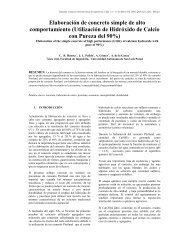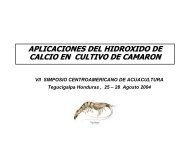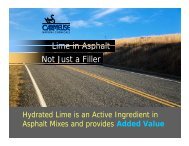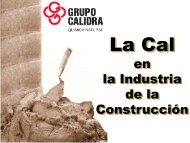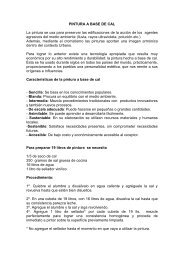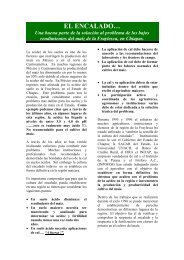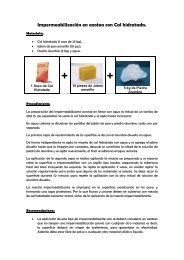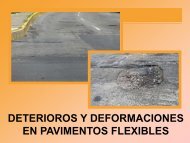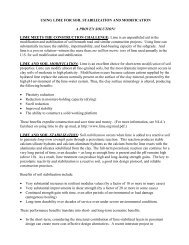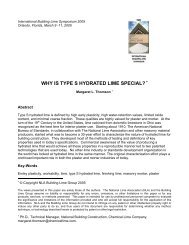Land Contamination: Technical Guidance on Special Sites: Acid Tar ...
Land Contamination: Technical Guidance on Special Sites: Acid Tar ...
Land Contamination: Technical Guidance on Special Sites: Acid Tar ...
You also want an ePaper? Increase the reach of your titles
YUMPU automatically turns print PDFs into web optimized ePapers that Google loves.
• to ensure the safe disposal of acid tars, treatment or at least partial treatment will berequired involving some form of neutralisati<strong>on</strong> (discussed in Secti<strong>on</strong> 6.2.5).6.2.2 Biological based technologies• Biological based techniques involve various forms of ex situ bioremediati<strong>on</strong>, such asbiopiles, landfarming, slurry phase biotreatment, windrow turning and in situprocesses, such as bioventing. These techniques do pose difficulties for acid tars, dueto their acidity, high c<strong>on</strong>centrati<strong>on</strong>s of organic compounds and problems with bioavailability;• the use of bioremediati<strong>on</strong> requires neutralisati<strong>on</strong> (or at least raising the pH to 5) via anintimate mixing of the tar and a neutralisati<strong>on</strong> agent such as calcium oxide or calciumcarb<strong>on</strong>ate. The mixing process can be prohibitively difficult to achieve (see 6.2.5,below);• even where neutralisati<strong>on</strong> is achieved, the issue of bio-availability remains. Thec<strong>on</strong>taminati<strong>on</strong> as a solid mass is difficult to degrade due to its very low surface area :volume ratio. In order for significant degradati<strong>on</strong> to take place, it needs to be fullydispersed as a suspensi<strong>on</strong> of fine particulates within a medium supplied with sufficientoxygen and nutrients. Given the solid nature of the tar this is difficult to achieve, evenusing specialist plant and equipment. Nevertheless, where these c<strong>on</strong>straints can beovercome, it is of interest as a sustainable technique.6.2.3 Chemical based technologies• The <strong>on</strong>ly potentially applicable chemical based technology is that involving surfaceamendments (e.g. organic matter or an alkali such as lime), and <strong>on</strong>ly for surface orshallow depth c<strong>on</strong>taminati<strong>on</strong> (see Remedial Treatment Acti<strong>on</strong> Data Sheets,Envir<strong>on</strong>ment Agency 2001);• the key problem is ensuring a suitably intimate mixture of lime and tar, since evenwith specialist plant this is likely to be difficult to achieve in situ especially with alago<strong>on</strong> of acid tar present. In any case, very large quantities of calcium oxide(quicklime) or other alkali may be required. A more advanced method may beappropriate, however, such as ex situ treatment or the use of a proprietary approachsuch as “Dispersing by Chemical Reacti<strong>on</strong>” (DCR). DCR and lime-based systems arediscussed further in Secti<strong>on</strong> 6.2.5.6.2.4 Physical based technologies• Air sparging and soil vapour extracti<strong>on</strong> are not applicable to acid tar lago<strong>on</strong>s due tothe fact that most of the c<strong>on</strong>taminati<strong>on</strong> will be of low volatility;• various washing systems may be applicable to associated c<strong>on</strong>taminated soil but willnot address the explicit tar deposits.R&D <str<strong>on</strong>g>Technical</str<strong>on</strong>g> Report P5-042/TR/04 34



